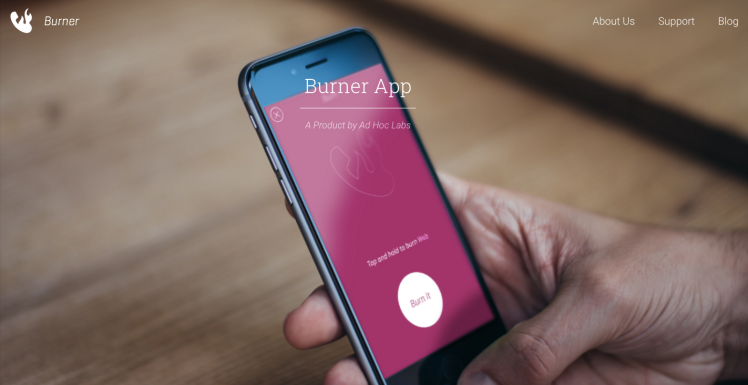More than a month after Burner launched its native integrations with Evernote, Slack, Dropbox, and SoundCloud, the provider of disposable phone numbers is opening itself up to developers. The company has released a way for third-parties to connect Burner with any number of applications or create new custom ones through the use of webhooks.
Developers interested in finding better uses for phone numbers can tap into these webhooks to create their own “If This Then That” (IFTTT) recipes that’ll perform specific actions. Burner’s chief executive, Greg Cohn, told VentureBeat that while his company has been working on native partnerships with Evernote and Slack, there are some integrations that it could never have thought up. With the release of this developer connection, the possibilities are seemingly endless.
Webhooks are more simplified versions of Application Program Interfaces (APIs) that you often hear companies releasing. When you want one application to pass information on to another, the first one submits a POST command to a web address with the information needed. The second application has been programmed to always know what to do with that data.
Although one might imagine that a developer would be needed to set this up, Burner said that anyone can take advantage of its developer connection by using a service like IFTTT or Zapier. By doing so, a custom integration can be made so that if a text is received at a Burner number, it can be programmed to, for example, cause your smart lights to flash in your home. Or perhaps store that message in your Trello board.
“The open Web will do more interesting things than Burner can,” said Cohn.
Right now Burner is only allowing outbound connections, meaning that its service is sending information to third-party apps. What this means is that you cannot program Slack, Trello, or your August smart lock to send data to your disposable phone number or to the Burner app. Cohn said that this decision was made to reduce the chance of abuse of the system.
Each Burner can only have one concurrent developer connection, we’re told, meaning that it can hit one webhook at a time. If developers want to send to multiple places simultaneously, however, they can use a service like reflector.io.
Cohn said that what Burner is doing isn’t precedent-setting. In fact, he wrote in a blog post: “Gmail created a tremendous amount of value for its users by making its email app programmable, i.e. allowing third-party developers to sit on top of it with added functionality, or to read and write to the data. Slack is creating a similarly valuable ecosystem for teams and enterprises right now.”
By opening up its platform to developers, albeit not with a full-blown SDK or API, Burner hopes to show that phone numbers can be used for more than just sending and receiving voice, text, and pictures over a mobile device.
“For the first time, we’re treating a consumer phone number as software and letting anyone who wants to, to build on top of it,” Cohn explained.
Although there’s now more flexibility for developers to do things themselves, perhaps hacking away at its product offering, Burner is looking at future native integrations like those it has with Slack, Evernote, Dropbox, and SoundCloud. If it makes sense, Cohn confirmed, Burner will do native integrations — regardless of whether a developer has already created a recipe with that service.


